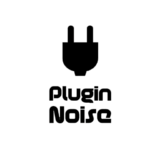Choosing between Native Instruments and Spitfire Audio for your next plugin or Kontakt library? Both these titans bring killer tools to the table, whether you’re into sampling, cinematic scoring, or wild sound design.
Most folks see Native Instruments as the Kontakt sampler king, your go-to for a massive range of sounds and production power.
Then you’ve got Spitfire Audio, the masters of those drop-dead gorgeous orchestral libraries and deeply emotive acoustic instruments.
But here’s where it gets juicy: they’re not just one-trick ponies! NI packs some serious orchestral punch, and Spitfire’s been dishing out some seriously unique sonic textures, which is awesome.
So, if you’re ready to level up your sound, who do you bet on? Having wrestled with both extensively, I’m here to spill the beans on Native Instruments vs. Spitfire Audio. Let’s figure out which is your next studio MVP!
Native Instruments vs Spitfire Audio
Choosing between Native Instruments and Spitfire Audio for your next plugin or Kontakt library?
Man, that’s the kind of “problem” we producers love to have!
Both of these titans serve up top-tier tools, whether you’re deep into sampling, cinematic scoring, or just crafting some wild, out-there soundscapes.
First off, let’s peek at how these audio giants present their main offerings.
Spitfire Audio doesn’t really do the whole “one massive bundle to rule them all” thing like Komplete. But their standout heavyweight is the BBC Symphony Orchestra Professional (BBCSO Pro), and boy, is it a monster in the best way.
Meanwhile, Native Instruments charges in with the mighty Komplete 15, which is less a plugin collection and more a sonic buffet at an all-you-can-eat volume.
- Spitfire Audio’s BBC Symphony Orchestra Professional
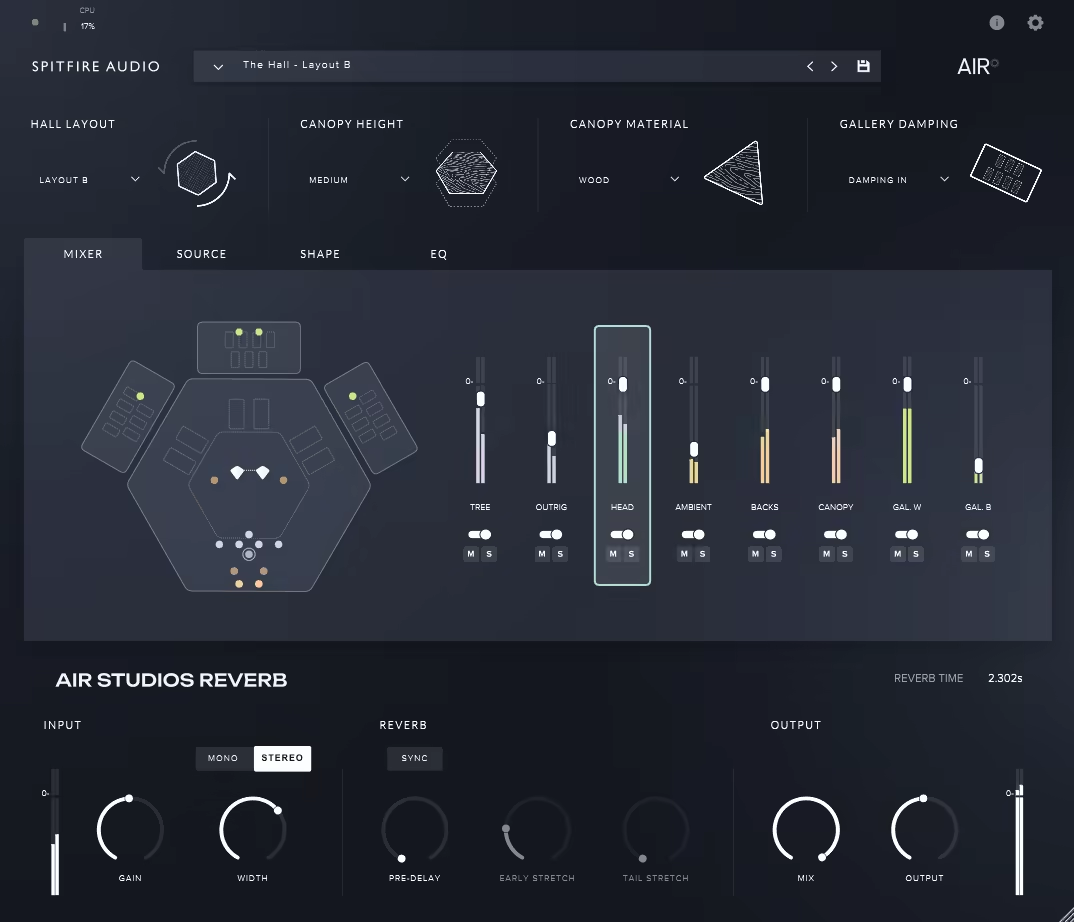
If you ask me, BBCSO Pro is where Spitfire goes full superhero mode.
It’s not a mishmash of plugins, it’s the entire dang orchestra meticulously captured in Air Studios. We’re talking over 600GB of pure orchestral gold.
When I need realistic, emotional, jaw-dropping orchestral sound, BBCSO Pro is my ride-or-die. It’s got a boatload of mic positions, articulations, and the dedicated plugin is super clean and intuitive. Even my sleep-deprived brain can navigate it!
Beyond BBCSO, Spitfire’s got its iconic Albion series, like Albion One, a killer cinematic toolkit at a more modest ~50GB. These are built for instant inspiration with orchestral elements, loops, and synthy pads that gel beautifully.
The overall Spitfire vibe? Hyper-realistic acoustics and emotive depth. But if you’re craving synths galore or electronic drums, you might feel like you showed up to a classical concert in rave gear.
- Native Instruments’ Komplete 15 Collection
Now over in Komplete land, things are wildly different. The Standard edition already packs around 95 instruments and effects.
But if you go big with the Collector’s Edition, you’re staring down the barrel of 290+ total items. That’s not a bundle, that’s a musical metropolis.
Just a heads-up, though: this beast needs over 1.1TB of space, so yeah, you’re gonna want that external SSD ready to roll.
Komplete 15 excels in breadth and versatility. Whether I’m cooking up pop beats, hip-hop bangers, EDM drops, or even a dark cinematic mood piece, it’s got me covered.
It’s built around Kontakt (yep, the legendary sampler) and Massive X (a slick, modern synth with more modulation than I can shake a MIDI cable at). Plus, it includes an army of drum libraries, effects, and Expansions.
Native Access makes installing everything a breeze, and the preset browser is pretty solid. That said, with this much content, I do occasionally suffer from option paralysis, like staring at 300 types of cheese and forgetting what I came for.
The included Symphony Series and Orchestral Essentials are good, really good, but if you’re after that raw airiness and nuance you get from Spitfire, they might feel just a tad clinical.
Same with some of the classic gear emulations, great value, but sometimes I find myself reaching for third-party stuff when I want extra character.
Plugin Comparison Table
Here’s a list of some of the most popular plugins from both brands.
| Category | Native Instruments | Spitfire Audio | Description |
| Flagship Full Orchestra | Symphony Series – Collection / Komplete Orchestra (within Komplete) | BBC Symphony Orchestra Professional | NI offers detailed orchestral sections; Spitfire’s BBCSO Pro is renowned for its exhaustive depth, mic positions, and iconic Air Studios sound. |
| Cinematic Toolkit (All-in-One) | (No direct single equivalent) Action Strings 2 + Damage 2 + Mysteria (Bundle these ideas) | Albion One | NI requires combining specialized libraries for this. Albion One is a celebrated all-in-one orchestral, percussion, loops & synth cinematic toolkit. |
| Epic / Large Strings | Action Strings 2 / Thrill (for tension strings) | Hans Zimmer Strings | NI’s Action Strings 2 offers playable phrases. HZ Strings provides massive, bold string sections recorded with Zimmer’s unique techniques. |
| Detailed Studio Strings | Symphony Series – String Ensemble | Spitfire Studio Strings Professional | Both offer pristine, detailed string ensembles suitable for contemporary scores and pop, recorded drier for flexible mixing. |
| Modern Character Piano | Noire (Nils Frahm) / Una Corda | Originals Felt Piano / Ólafur Arnalds Felt Piano | NI’s Noire offers rich, cinematic felt piano sounds. Spitfire’s Originals Felt Piano (or Ólafur’s) provides intimate, characterful felt tones. |
| Concert Grand Piano | The Grandeur / The Maverick | Hans Zimmer Piano | NI offers classic grand piano sounds. HZ Piano is a meticulously sampled grand with immense detail, multiple mics, and a powerful sound. |
| Aggressive Cinematic Perc. | Damage 2 | Hammers | Damage 2 is an industry standard for brutal, epic percussion. Hammers offers a wide range of impactful orchestral and found percussion. |
| Evolving Textures/Pads | Straylight / Pharlight / Mysteria | Ólafur Arnalds Chamber Evolutions / Stratus | NI’s granular/vocal synths create unique textures. Spitfire’s “Evo Grid” engine (or similar in Stratus) creates beautiful, evolving soundscapes. |
| Professional Choir | Symphony Series – Choir / Mysteria (for avant-garde vocals) | Eric Whitacre Choir / Epic Choir | NI offers traditional and avant-garde vocal options. Spitfire’s Eric Whitacre Choir is renowned for its expressiveness and beauty. |
| Expressive Solo Strings | Cremona Quartet (Stradivari Violin etc.) | Alternative Solo Strings / Solo Strings | NI’s Cremona Quartet offers legendary solo string instruments. Spitfire provides deeply sampled, expressive solo strings for nuanced performance. |
| World/Ethnic Instruments | Discovery Series (India, West Africa, etc.) | (Various specific libraries, e.g., British Drama Toolkit for characterful folk instruments, or individual artist collaborations) | NI’s Discovery Series is a strong, diverse collection. Spitfire offers more niche/specific world instruments, often within broader toolkits. |
| Modern Wavetable/Hybrid Synth | Massive X | BT Phobos | Massive X is a flagship wavetable synth. Phobos is a powerful polyconvolution synthesizer for complex, evolving sonic landscapes. |
| Free Instrument Suite | Komplete Start | Spitfire Audio LABS | Komplete Start offers a bundle of free instruments & effects. LABS is an ongoing series of unique, high-quality free sampled instruments. |
| Creative Sound Design/Tension | Thrill | Kepler Orchestra / Polaris | Thrill excels at playable tension and atmospheric sound design. Spitfire’s newer “systems” like Kepler or Polaris offer evolving orchestral textures for scoring. |
| Iconic Drum Sampler/Machine | Battery 4 | (Not a direct equivalent; Percussion from Albion/Hammers) | Battery 4 is a leading drum sampler for electronic and acoustic kits. Spitfire focuses on orchestral/cinematic percussion rather than kit samplers. |
Strings
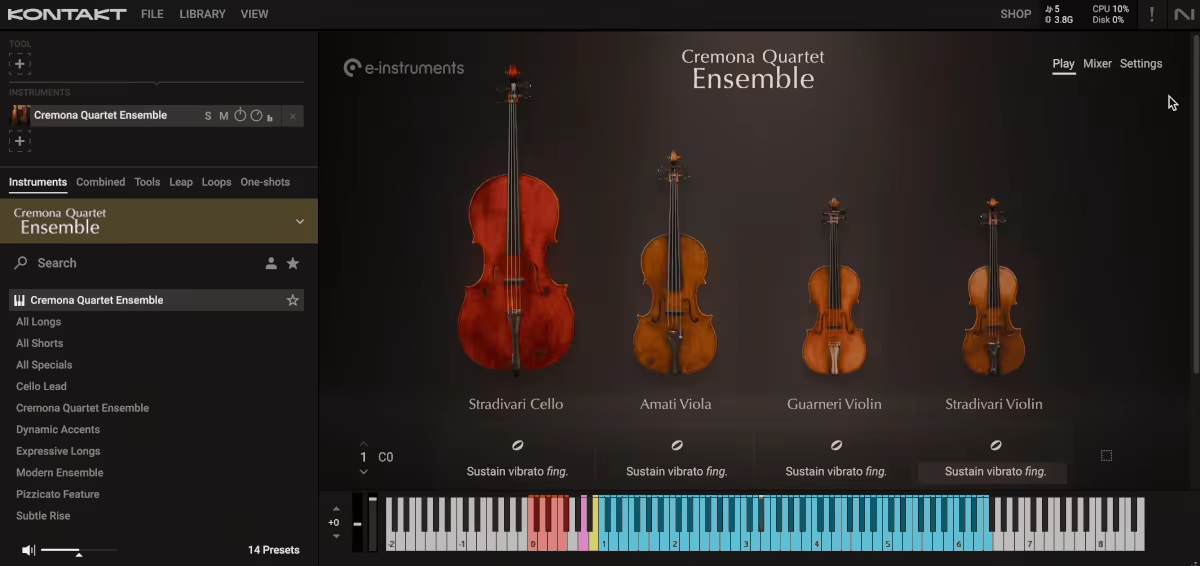
- Sound Quality & Realism
Alright, so when I think Spitfire Audio, I instantly imagine those lush, epic, Hollywood blockbuster string sounds. They seriously record in places like Air Studios, and you can bloody well hear it.
We’re talking deeply sampled goodness with so many articulations and mic positions, it feels like you’ve got a real orchestra in your computer. It’s that “cinematic hug” I always go on about that pure, unadulterated emotional power.
Now, Native Instruments ain’t no slouch either, far from it! With stuff like their Session Strings Pro 2 or the strings in their Cremona Quartet Ensemble you get super professional, clean, and really versatile string sounds.
I find these fit perfectly into a pop track, a modern game score, or even some electronic bits. They might not always have that specific room sound or the “recorded by actual wizards” vibe of Spitfire’s top-tier stuff, but they are seriously solid and just work.
- Ease of Use & Workflow
Spitfire’s newer libraries in their own dedicated plugin? Chef’s kiss, mate, super intuitive and looks great. For their older stuff in Kontakt, well, it’s Kontakt; you might do more keyswitching for those fancy articulations, but the results are worth it.
With Native Instruments, you’re mostly chilling in Kontakt, which is like an old comfy jumper for many of us. Their string libraries often have smart playable features or even phrase-based options, a massive timesaver for sketching ideas fast. And if you’ve got any of their Komplete Kontrol keyboards, that NKS integration is pretty sweet for tweaking.
- Which One Is Right For You?
So, when I’m chasing the absolute pinnacle of string realism, that epic movie score sound, and all the emotional depth you can handle, then Spitfire Audio is probably whispering sweet nothings in my ear. For film, TV, game scoring, or just making incredibly expressive orchestral music, their high-end stuff is legendary.
Just make sure your computer (and your bank account!) is ready for the commitment. But if you need versatile, top-quality strings that can slot into a wider range of genres, especially pop, electronic, or more contemporary scores, Native Instruments is a cracking choice.
The value you get with their string offerings, especially if they’re part of a Komplete bundle, is massive. They play really nicely within a broader production setup, and they just get the job done beautifully.
Synths
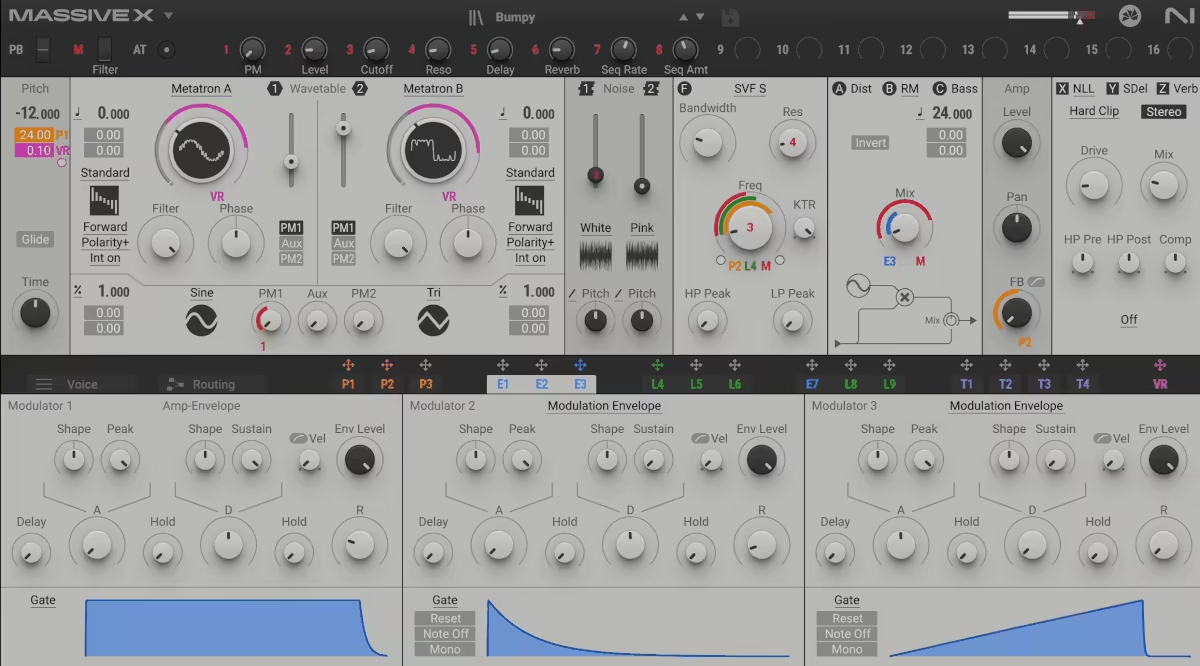
- Sound Quality & Character
When I think synths, Native Instruments is usually the first name that pops into my head. They’ve got absolute legends like Massive X, FM8, and the wild modular playground that is Reaktor.
You can get everything from classic analog warmth to cutting-edge wavetable madness and mind-bending granular textures. Seriously, if you can dream up a synth sound, NI probably has a tool to make it happen, and it usually sounds powerful and clear.
Now, Spitfire Audio dances to a different synth beat, if you ask me. They’re less about your traditional subtractive or FM synths and more into hybrid textures, evolving atmospheric pads, and unique cinematic sound design tools.
Think of libraries like BT Phobos, which is a crazy polyconvolution synth, or the synth elements tucked inside their Albion series. These are designed to create evocative soundscapes that blend beautifully with orchestral stuff, rather than your typical synth leads or basses.
- Ease of Use & Workflow
For me, Native Instruments’ big synths like Massive X or Reaktor offer some seriously deep programmability. This means they have a bit of a learning curve, no doubt, but the control you get is immense.
Plus, if you’ve got their hardware, that Komplete Kontrol integration makes tweaking feel much more hands-on and intuitive.
Spitfire’s synth-like instruments often feature more curated and sometimes unconventional interfaces. Take Phobos, for example, it’s designed to get you to specific, often complex sonic results rather than giving you open-ended synth programming from scratch. They’re often about manipulating really clever, pre-designed sound engines.
- Which One Is Right For You?
If you want a comprehensive, super-powerful, and incredibly versatile suite of software synthesizers for pretty much any genre of electronic music or deep sound design, then Native Instruments (especially within Komplete) is an absolute no-brainer. They give you the tools to sculpt almost any synthesized sound you can imagine.
But, if your heart beats for unique, atmospheric, and often cinematic synthesized textures that have a real organic feel and blend beautifully with acoustic instruments, then Spitfire Audio’s specialized offerings are incredibly inspiring. They’re less about building a synth patch from scratch and more about crafting these amazing, evocative sonic landscapes.
Pianos & Keys
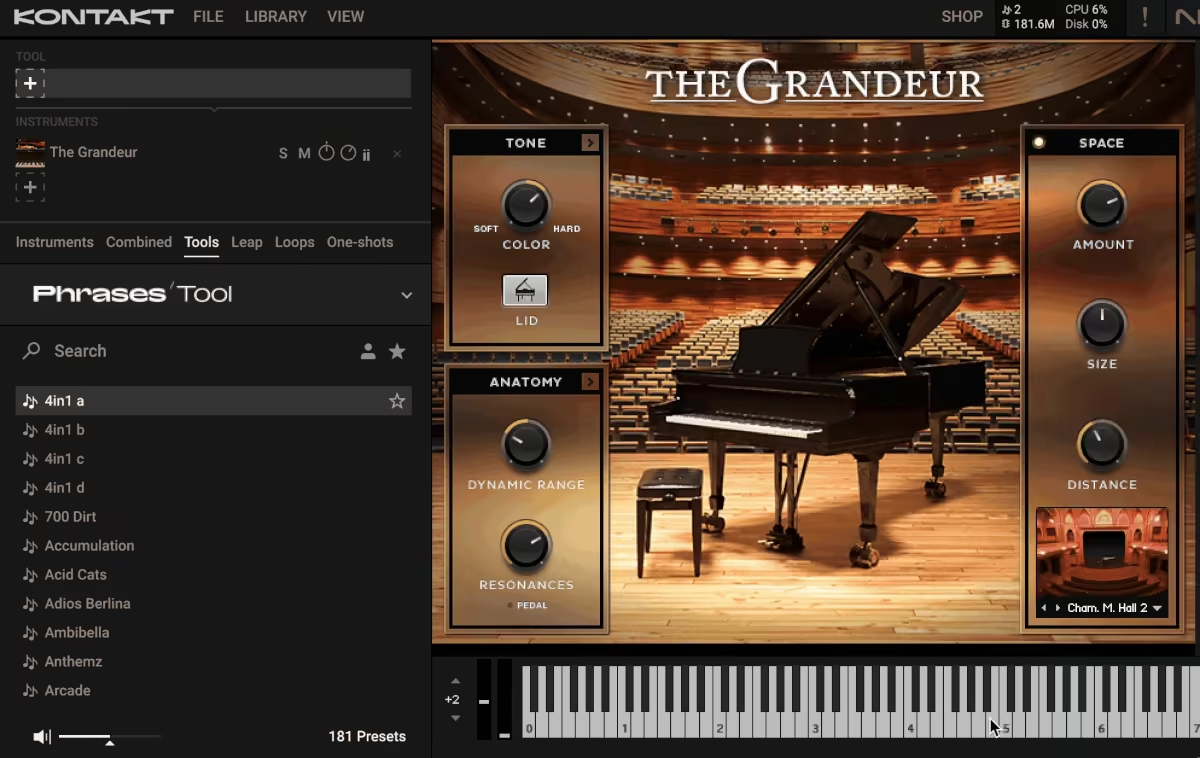
- Sound Quality & Character
I’ve spent countless hours getting lost in Spitfire Audio’s piano sounds. Their Originals Felt Piano and the Ólafur Arnalds Felt Piano always hit me right in the chest, these aren’t just samples, they’re pure emotion wrapped in keys.
Whenever I want to create something gentle, nostalgic, or ambient, those are my first choices. And when I need to bring in the big cinematic vibes, the Hans Zimmer Piano is an epic monster. Every note feels like it’s part of a Hollywood score.
Now, when I fire up Native Instruments, it’s like stepping into a massive piano buffet. I bounce between The Grandeur for a classic concert feel, The Maverick for something a little quirky, and Noire, which just oozes vibe, especially that felt preset!
I’ve also leaned heavily on Alicia’s Keys and Electric Keys (yep, those lush Diamond and Phoenix Rhodes sounds). They’ve got this vintage charm that just clicks into lo-fi beats, soul tracks, or anything needing a little retro magic.
- Ease of Use & Workflow
Spitfire’s pianos in their dedicated plugin are super slick. I can quickly adjust mic mix, reverb, and expression with no menu diving. It’s just me, the keys, and instant inspiration.
When I open something like the Hans Zimmer Piano, I love that they offer deep customization but still keep it intuitive. I don’t feel overwhelmed, I feel like I’ve got a professional studio at my fingertips.
With Native Instruments, most of their pianos live in Kontakt, which honestly feels like home turf to me now. The interfaces are clean and clear, and options like mechanical noise, reverb, and even tone character are all a click away.
And let’s not forget Noire’s particle engine, that thing lets me add evolving textures that breathe life into simple chords. In Kontakt 8, I’m also loving the Chords tool for quickly getting ideas down without having to think too hard.
- Which One Is Right For You?
If you’re chasing deep emotion, cinematic textures, or those signature artist vibes (think Ólafur Arnalds or Hans Zimmer), Spitfire Audio will seriously pull at your heartstrings. Their pianos have this raw, artistic character that I can’t find anywhere else.
But if you’re after a huge, versatile toolkit of both acoustic and electric keys, Native Instruments is an absolute powerhouse. I use their instruments in everything, film scoring, pop, hip hop, even weird experimental stuff. The variety and quality you get (especially inside a Komplete bundle) is just bonkers good.
Orchestras
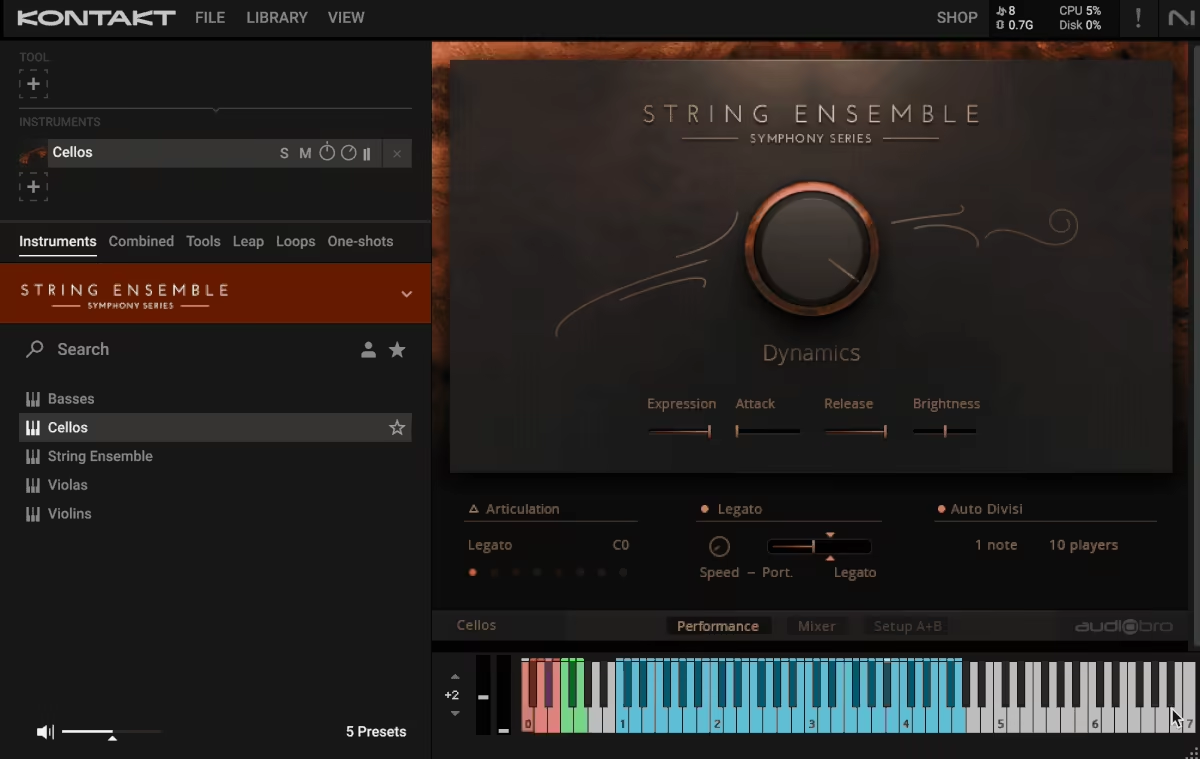
- Sound Quality & Character
When I think full orchestra, Spitfire Audio is the first name that pops into my head, and honestly, their BBC Symphony Orchestra (BBCSO) is the one I reach for when I want that top-tier, cinematic lushness. Whether I’m using Discover, Core, or going all-in with the Professional version, the recordings from Air Studios just breathe life into everything.
The detail, that natural room sound, and the emotional weight it carries? Absolutely stunning. And when I need something more hybrid or modern, I flip over to their Albion series, these are like orchestral toolkits with extra synths and loops, perfect for quick cinematic cues.
That said, I’ve also spent loads of time with Native Instruments’ orchestral stuff, especially their Symphony Series and other gems inside Komplete. These are super clean, professionally recorded, and they’re versatile as heck, great for when I want to build a score that leans more into the modern or pop-infused vibe.
While they don’t always have that same “recorded-by-angels-in-a-cathedral” feel as Spitfire’s top dogs, they sit beautifully in a mix and just get the job done, especially when I’m working fast or blending genres.
- Ease of Use & Workflow
Using Spitfire’s BBCSO in their dedicated plugin is honestly a joy. It’s got a clear layout, and switching between articulations or mic positions is super smooth, even with the more complex Professional version, I never feel bogged down.
And I can’t lie, the Albion libraries are a go-to when I just want to drag and drop cinematic awesomeness, those layered patches are already epic, so I can sketch things out lightning fast.
With Native Instruments, I’m mostly inside Kontakt, which at this point feels like a second home. Their Symphony Series stuff is laid out really well, and if I’m using my Komplete Kontrol keyboard, the NKS integration is a huge plus, it just makes everything feel so plug-and-play.
They strike a nice balance too: there’s enough depth for tweaking, but also enough simplicity for speed when I need to get ideas down fast.
- Which One Is Right For You?
If you’re after that ultra-realistic, emotion-packed orchestral sound and want to tap into the magic of Air Studios, Spitfire Audio’s BBCSO (especially Core or Professional) is seriously next-level. I reach for it when I want my score to sound like a feature film from the first note.
And if I’m in a rush or just want everything in one place with some cinematic flair, I grab an Albion library and let it do the heavy lifting.
But if you need a well-rounded orchestral toolkit that can slide into just about any genre, from traditional scoring to pop, trailer music, or game audio, Native Instruments has your back. Their Symphony Series gives me tons of mileage, and when I factor in how well it plays with the rest of Komplete, it’s honestly a no-brainer for me.
Sometimes, I just need that studio-polished sound without all the frills, and NI delivers that in spades. Plus, it doesn’t hurt that you’re getting a whole universe of other sounds along with it.
Guitars
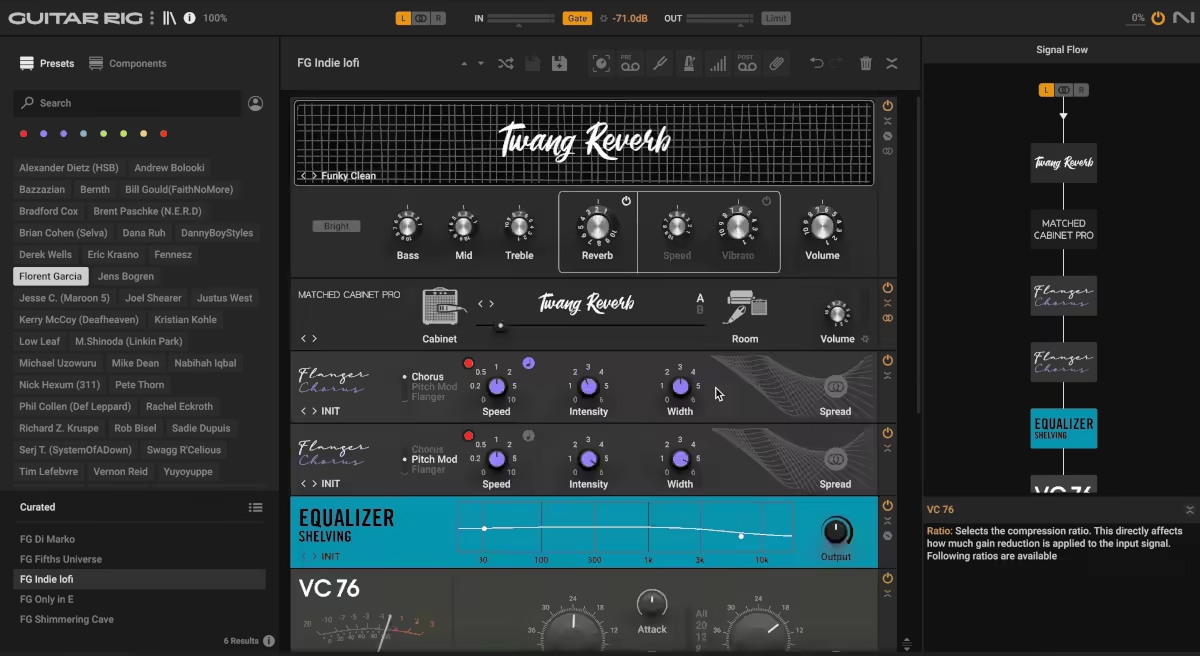
- Sound Quality & Character
When it comes to realistic electric and acoustic guitars, I gotta say, Native Instruments really shines. Their Guitar Rig Pro and Kontakt-based guitar libraries are my go-tos for everything from crunchy rock tones to twangy country licks and smooth jazz chords.
As a guitarist myself, I’ve spent tons of time with their Session Guitarist series (like Electric Sunburst and Strummed Acoustic) and the newer Acoustic Sunburst Deluxe, these sound insanely detailed and are surprisingly playable.
The amount of articulations and patterns they pack in means I can make guitar parts that feel really alive. And Guitar Rig Pro? Man, it’s a beast when it comes to shaping any guitar tone I can imagine.
On the flip side, Spitfire Audio approaches guitars way differently. They’re all about the cinematic, textural, and atmospheric vibe. If you want a straight-up rock guitar library, you won’t find it here. Instead, I’m usually diving into libraries like the Contemporary Drama Toolkit or parts of their Albion series, where guitars are processed, ethereal, or drone-like, perfect for adding mood or texture rather than a lead instrument role.
I love that they also team up with artists for some truly unique guitar sounds, like the Kithara library, which actually comes from NI but fits that cinematic guitar aesthetic perfectly.
- Ease of Use & Workflow
I find Guitar Rig Pro’s drag-and-drop interface super intuitive. Building signal chains with amps, cabs, and effects feels effortless, which lets me experiment without getting stuck.
Native Instruments’ Session Guitarist libraries inside Kontakt also surprise me with how easy they are to use. The pattern players and articulation mapping make crafting realistic guitar parts a breeze, even for someone like me who isn’t a full-time guitarist.
With Spitfire, guitar sounds are usually wrapped up in bigger cinematic libraries, and their interfaces tend to be straightforward. It’s less about dialing in every guitar parameter and more about quickly shaping that specific atmospheric vibe.
- Which One Is Right For You?
If you want a comprehensive guitar toolkit, realistic sampled instruments across genres, plus a powerhouse amp and effects sim, then Native Instruments is where I’d put my money. I’ve leaned on Guitar Rig Pro and Session Guitarist time and again for just that reason.
But if you’re after some unique, cinematic guitar textures, maybe drones or processed sounds to add mood and atmosphere, I’d definitely check out Spitfire Audio. Their guitars feel more like sound design tools than traditional instruments, and that can be insanely inspiring for scoring or ambient work.
Other Instruments
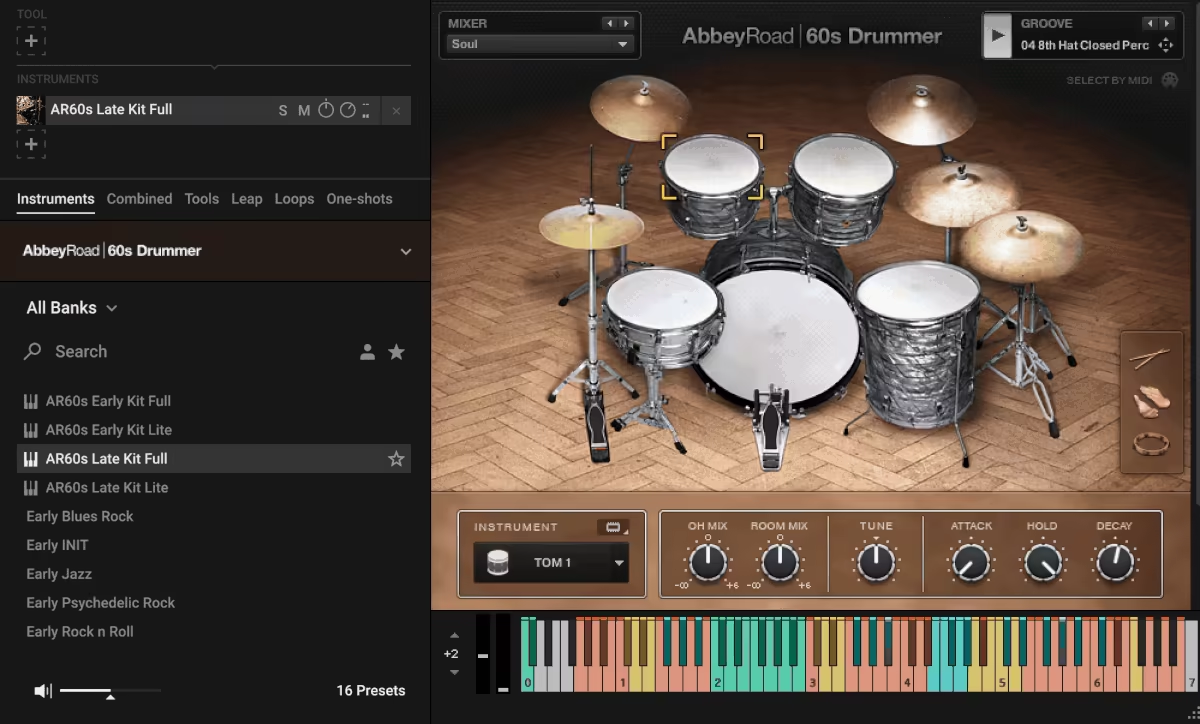
- Sound Quality & Character
When it comes to drums and percussion, Native Instruments seriously delivers. Their Abbey Road Drummer series has been my go-to for realistic, mix-ready acoustic kits, super dynamic and detailed. And then there’s Battery 4, which is a full-blown percussion playground. I load it up when I need electronic, cinematic, or even experimental percussion that slaps.
If I want some authentic global rhythm, the Discovery Series pulls through again with killer West African percussion and Latin grooves. It just feels real, super helpful when I’m trying to add a more human, cultural vibe to my tracks.
As for brass and woodwinds, NI might not be the king of orchestral depth (that’s where Spitfire shines), but their Session Horns and Session Strings libraries are seriously solid for pop, funk, and even cinematic work. They’re polished, easy to play, and blend well in all sorts of productions. I’ve used them on everything from lo-fi beats to trailer cues.
But when I need that next-level, emotional orchestration, especially those soaring brass swells, warm woodwinds, or choirs that hit you in the feels, Spitfire Audio is my weapon of choice. Stuff like British Drama Toolkit or Epic Brass & Woodwinds just oozes cinematic soul. It’s like scoring a film even when I’m just writing a moody ambient tune.
And then, of course, the LABS series sneaks in again, surprising me with weird little percussive instruments, processed strings, or ambient textures that glue everything together. I never know what I’m gonna get, but it’s always inspiring.
- Ease of Use & Workflow
Most of NI’s instruments run inside Kontakt, which makes it super streamlined if you’re already living in that ecosystem. The drum libraries come with intuitive mic mixing and groove players, which help me get great-sounding parts without needing to be a pro drummer. Battery 4’s drag-and-drop sample layout and fast modulation routing? Chef’s kiss for beat-building.
The Session series instruments also offer smart articulation control and play assist tools, no fussing around with keyswitches or digging through menus.
Over on the Spitfire side, their dedicated plugin interface (for newer libraries) is beautiful and to-the-point. Whether I’m pulling up an epic brass swell or layering subtle woodwinds in a score, I’m usually playing inspiring stuff within seconds.
And for quick wins? LABS is almost too easy. Open it up, tweak a knob or two, and you’re already vibing.
- Which One Is Right For You?
If you’re after versatile drums, global percussion, or accessible brass/woodwind libraries that cover a ton of styles and sound polished out of the gate, Native Instruments totally delivers. From Battery’s beat mayhem to Abbey Road’s classic kits, there’s something for every genre.
But if you’re going for maximum realism, cinematic depth, and that unmistakable orchestral emotion, Spitfire Audio’s specialized libraries are where it’s at. Their stuff sounds like it walked straight out of a blockbuster soundtrack.
Me? I grab tools from both. Drums and funk horns from NI, lush cinematic winds and choirs from Spitfire. It’s the best of both worlds.
Effects
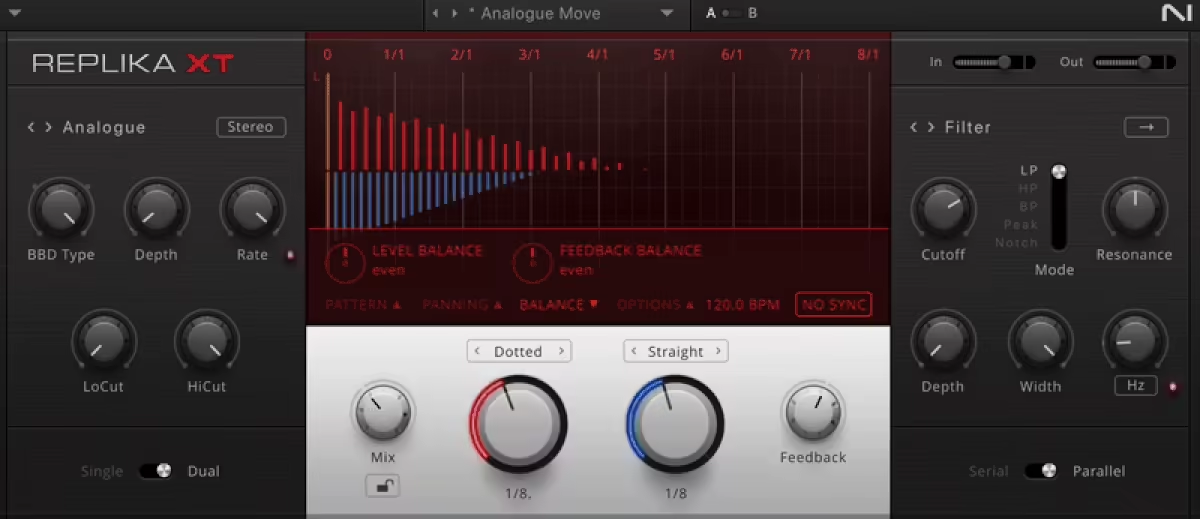
- Sound Quality & Character
Now this is where Native Instruments really flexes. If you’re looking for serious studio-grade effects, creative manglers, or mixing and mastering tools that go way beyond “just decent,” NI has your back, hard.
I’m talking about stuff like Replika XT, one of my absolute favorite delay plugins, super versatile, with everything from dirty tape echoes to pristine digital spaces.
Or Raum, which is like if a reverb plugin drank a magic potion and became a sound design wizard.
And then there’s Supercharger GT, their juicy tube compressor that I slap on drums when I want ’em to hit with attitude.
Besides the famous Guitar Rig, we also have the iZotope series like Neutron, Ozone, Equinox and more, thanks to the merge between NI and iZotope.
Need to get wild? Enter Molekular, a crazy modular multi-effect that’s pure ear candy for experimental stuff. And don’t even get me started on Guitar Rig Pro again, it’s not just for guitars. I throw it on synths, vocals, even field recordings. It’s like a playground for your audio.
Spitfire Audio, on the other hand, doesn’t really dive into standalone effects. Their sound-shaping tools are usually baked into the instruments themselves, designed to enhance the mood or space of what you’re playing, not necessarily replace your go-to FX chain.
But, the Studio Reverb Air has my respect, as it’s one of the most powerful reverb plugins I’ve used, especially when it comes to cinematic production.
- Ease of Use & Workflow
What I love about NI’s FX plugins is that they’re designed to work seamlessly with their ecosystem.
Everything’s NKS-friendly, so I can tweak delays, reverbs, compressors, and weird sound-bending tools straight from my Komplete Kontrol keyboard or Maschine. That kind of integration saves time and keeps me in the creative zone.
Most of their effects have clean, modern interfaces with helpful visual feedback, so dialing in a killer sound is never a chore. Whether I’m mixing a tight pop track or getting lost in weird ambient layers, I always find something inspiring in their FX suite.
Spitfire’s on-board FX are more about subtlety and vibe, tailored for the specific instrument and always tastefully done. But for deep customization, crazy modulation, or full-on mix/mastering duties, you’re not gonna get that from them.
- Which One Is Right For You?
If you’re serious about sound design, mixing, or pushing audio in bold new directions, Native Instruments is the clear winner here. Their FX plugins are creative tools in their own right, not just utilities.
Whether you want lush reverbs, analog-style saturation, glitchy chaos, or ultra-clean mixing tools, NI’s got a plugin for it and they’re all top-notch.
If you’re using Spitfire libraries inside a cinematic score or ambient track, you’ll still find lovely built-in effects that match the tone and feel of the instrument. But when it’s time to really shape your mix or explore new sonic territory, you’ll want to tag in NI’s heavy hitters.
Pros and Cons
Honestly, if your productions are crying out for that unique character, those stunningly realistic choirs, or incredibly atmospheric textures, Spitfire Audio is your best mate.
Plus, their constant stream of free, inspiring, and beautifully unconventional sounds (seriously, check out LABS!) can totally lift a track from “nice” to “wow, what was that sound?” , especially when I’m diving into cinematic or ambient stuff.
Choosing between Native Instruments and Spitfire Audio isn’t about picking a “winner.” It’s more about knowing what fits your style, workflow, and needs. Both are giants in the game, and I use stuff from both all the time.
Think of it like this: if you want a massive, versatile toolkit covering nearly every sound and genre, Native Instruments with Komplete is tough to beat. But if you’re chasing ultra-realistic, deeply emotive, character-filled sounds, especially for orchestral and cinematic music, Spitfire Audio brings that special magic.
Native Instruments
- The Pros
For me, the biggest plus is the sheer breadth and value you get, especially with Komplete bundles. You’re grabbing a monster collection of high-quality synths, samplers (hello, Kontakt!), effects, diverse sampled instruments, and modern production tools, all in one neat package.
Their stuff fits into everything I throw at it, pop, electronic, hip-hop, even film scoring. I’m also a sucker for the NKS integration with their hardware, which makes the workflow so smooth. Plus, Kontakt is the gold standard, powerful and packed with third-party goodies.
- The Cons
The flip side? That massive Komplete bundle can feel overwhelming, talk about option paralysis. I’ve totally been stuck staring at a mountain of sounds wondering where to start.
Also, while their orchestral and acoustic instruments are solid, sometimes they lack the nuanced realism or unique room character you get from dedicated Spitfire libraries.
And yeah, installing Komplete’s bigger bundles is a marathon, so be ready with your snacks and a big hard drive. Some older emulations feel a bit less “vibey” compared to newer, specialized tools.
Spitfire Audio
- The Pros
Spitfire’s strength, for me, is the unparalleled sound quality, realism, and emotional depth in their orchestral and acoustic libraries. Recording in iconic studios like Air Studios gives their sounds this cinematic weight that’s just breathtaking.
I’m also obsessed with their artist collaborations and the quirky, inspiring free LABS instruments. Spitfire nails those special sounds that can really make a track come alive. And their dedicated plugin player for newer libraries is a joy to use, super intuitive and smooth.
- The Cons
That said, Spitfire is a bit more specialized. You won’t find as wide a selection of synths or broad production tools like you do with NI.
Also, their top-tier libraries can be pricey and can demand a good chunk of CPU and RAM, so if you’re on a tight budget or have a less powerful setup, that’s something to keep in mind.
Last Words
At the end of the day, the best choice really depends on you. If you’re just starting out or want an all-in-one versatile toolkit, Native Instruments Komplete is an insane value and can do just about anything.
But if your heart beats for cinematic scoring, acoustic realism, or those deeply characterful sounds dripping with emotion, then Spitfire’s libraries might just change your music game.
Most of us (myself included) end up with a mix of both, cherry-picking the best tools from these two giants to craft exactly what we need.

